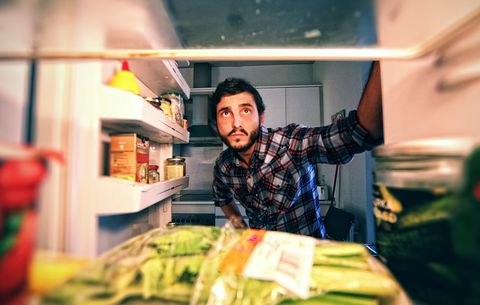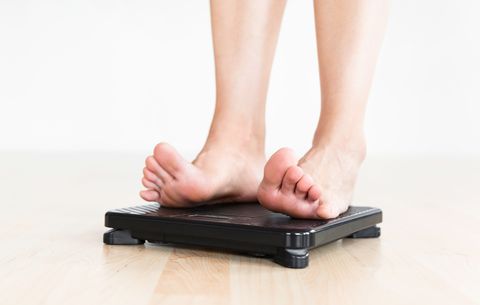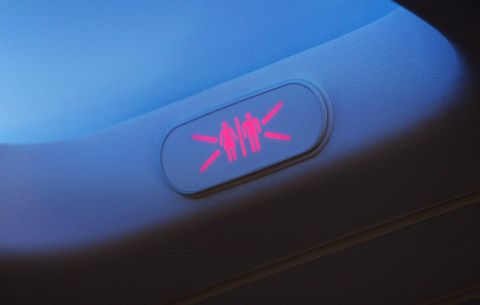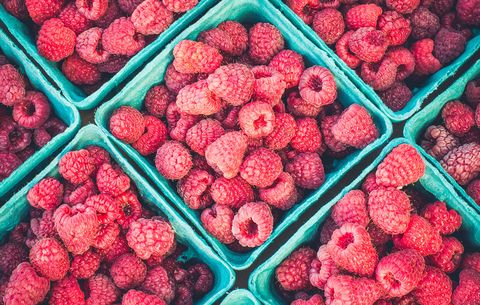Fiber is an underrated nutritional powerhouse: This carbohydrate keeps you feeling full, aids in weight loss, and keeps your stomach happy.
Think of fiber as resistance training for your gastrointestinal tract, explains Nathan Myers, M.S., R.D., clinical dietitian at James J. Peters VA Medical Center in New York. It keeps everything moving through your intestines smoothly and feeds good-for-you gut bacteria, which have been linked to a whole host of health benefits.
Foods like whole grains, pulses, berries, broccoli, spinach, and nuts are all great sources of fiber. The thing is, you’re probably not eating enough of them.
“The recommendation for fiber intake is 14 grams (g) per 1,000 calories consumed, says Myers. “So, the average guy needs 30 to 40 g of fiber per day, depending on body size and activity level.” (To put that in perspective, two slices of multigrain toasted bread will get you 6 g of fiber.)
The average American adult, however, eats only 15 g of fiber per day, he says. Here’s what happens when you don’t get enough fiber in your diet—and exactly how you can get more of it.
1) YOU HAVE NO ENERGY

Getty
When you eat a lot of sugar-loaded simple carbs—like soda, white bread and pasta, or processed snacks—it’s safe to assume you’re probably not getting enough fiber from more complex carb sources, like whole grains, legumes, and fruit.
Those refined carbs cause a rapid surge in blood sugar after your meal, says Myers. Your body tries to correct that spike by producing more insulin, resulting in an energy crash.
But when you eat a fiber-rich meal, your blood sugar increases at a slower, steadier rate. “Fiber, along with protein and fat, helps to slow down digestion, which means sugar is released into our bloodstreams more slowly,” says Alissa Rumsey, M.S., R.D., creator of the free guide 3 Steps to a Healthier You.
“Foods high in fiber help to stabilize our blood sugar and prevent peaks and crashes that can happen with low-fiber, refined carbohydrate-based foods,” she says.
The result? A more controlled and sustained energy boost, says Myers.
Related: 7 Sneaky Signs Your Blood Sugar Is Too High
2) YOU FEEL HUNGRY SHORTLY AFTER YOU EAT

Getty
Your stomach empties more quickly when your meal is low in fiber, explains Myers, meaning you’ll feel hungrier faster.
In fact, a study published in Food & Nutrition Research found that men who ate fiber-rich meals containing beans and peas actually felt more full than those who ate protein-rich meals containing pork and veal.
That’s because soluble fiber, which is typically found in beans and peas, forms a gel-like material in your digestive tract as it dissolves in water, causing slower absorption of nutrients into your bloodstream.
Related: 8 Foods That Will Actually Keep You Full For Hours
3) YOU CAN’T LOSE WEIGHT

Getty
Because fiber is so satiating, it’s important that you try and get enough of it when you’re trying to lose weight. When you feel fuller for longer, you’re likely to eat fewer calories overall, explains Myers.
High-fiber foods often require more chewing and take longer for your stomach to digest, both of which signal feelings of fullness to your body, according to the American Heart Association (AHA).
“Moreover, fiber is not absorbed by the body, so it does not substantially contribute to total calorie intake,” Myers says. “For example, 100 grams of white rice will provide more calories than an equal weight of brown rice due to the difference in fiber content.”
(Want to lose your gut? You’ll need a top-notch workout routine, like 6-Week Sweat Off from Men’s Health, a full-body fitness program that will help you melt fat right in your own living room.)
Related: 12 Easy Food Swaps That Will Help You Lose Weight
4) YOU CAN’T POOP

Getty
Fiber is your friend when you’re feeling blocked up, since it adds “bulk” or size to the contents of your gastrointestinal tract. This helps keeps things moving through your intestines, explains Myers.
“Fiber also attracts water, which keeps the stools soft and also aids movement,” he says. “Thus, getting too little fiber can result in hard, dry stool that moves slowly, which results in constipation or strained bowel movements.”
Related: What Your Poop Says About Your Health
5) YOUR HEALTH NUMBERS ARE OFF

Getty
Heart problems can be caused by a myriad of health issues, but many of them can be linked to your diet. In fact, people who have survived a heart attack have a greater chance of living longer if they bump their fiber intake, according to research published in The BMJ. What’s more, fiber from whole grains—like oatmeal, wild rice, and barley—may lower your risk of heart disease, stroke, obesity, and type 2 diabetes, the AHA says.
Fiber teams up with other beneficial nutrients, like zinc, iron, and B vitamins, to lower your cholesterol levels and improve your body’s ability to process blood sugar—all of which keep your ticker running smoothly.
Fiber also grabs on to bile, a cholesterol-rich substance used in the digestive process, explains Myers. Since your body doesn’t absorb fiber, it flushes this bile out of your body through your bowel movements.
“This can help reduce the level of cholesterol in the body, which helps prevent the development of high blood pressure and subsequent forms of cardiovascular disease,” he says.
The 5 Best Foods To Fight Heart Disease:
HOW TO GET MORE FIBER IN YOUR DIET

Unsplash
Up to 40 g per day is a whole lot of fiber, and usually feels unattainable for many people. In fact, you’d need to eat up to eight servings of fiber-rich foods—like raspberries, beans, and quinoa—to reach that number.
It’s a great target to keep in mind, but you don’t have to obsess over the number, says Men’s Health nutrition advisor Alan Aragon, M.S. A simple approach: Make whole or minimally-refined foods the main part of your diet, whether they be from plant or animal sources.
If you really want to bump your intake, try to increase the amount of fiber you’re eating gradually.
To incorporate it throughout your day, Rumsey suggests sneaking it in at breakfast with a side of fruit, adding a serving of beans or legumes into your salads or pasta, and snacking roasted chickpeas or nuts.
Myers recommends adding one daily serving of a high-fiber food—meaning it has 5 g of fiber or more per serving—on a weekly basis until you reach your desired amount. You can get that from a medium to large apple, a cup of Brussels sprouts, a large baked potato eaten with the skin, or a cup of whole wheat pasta.
Just note that it’s important to increase your fluid intake simultaneously, otherwise you might get gassy and constipated, he says. For every 5 g of fiber you add, increase your fluids by 8 ounces.
Source: Read Full Article